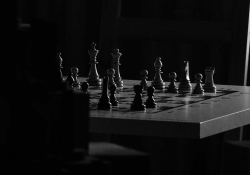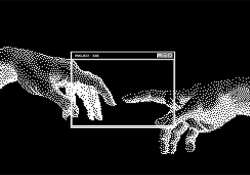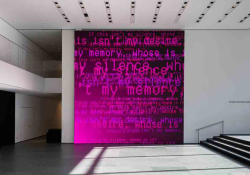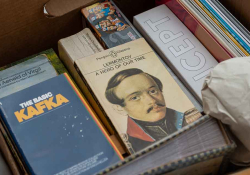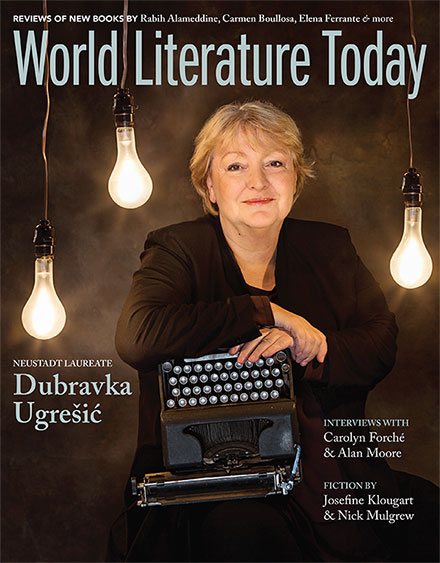Mothers and Daughters: Generational Conflict and Social Change in the Work of Dubravka Ugrešić

My training as a scholar of Russian literature and culture colors my readings of Dubravka Ugrešić’s work. No matter how hard I try to stop myself from reaching for parallels in classic Russian and Soviet novels, works of literary criticism, and even history, I find that this familiar lens inserts itself whenever I begin to think or speak about Ugrešić’s fiction. I cannot discuss Steffie Cvek in the Jaws of Life without talking about Russian formalism or consider The Museum of Unconditional Surrender and The Ministry of Pain without thinking about the literature of Russian emigration and exile, including specifically the work of Nabokov and Brodsky. Fortunately, in the case of Ugrešić’s work, such associations are less artificial than they would be for many other East European authors. Ugrešić is a specialist in Russian literature by training and regularly references both nineteenth- and twentieth-century Russian literary works in her novels and short fiction. Her short story “Hot Dog in a Warm Bun” reworks elements of Nikolai Gogol’s classic short story “The Nose” by exploring and disrupting the critical frameworks that have often been used to analyze this work. Her “The Kreutzer Sonata” responds to the work of Tolstoy. The plot of Ugrešić’s “The Kharms Case” centers on the desperate efforts of a translator to get a volume by the Russian modernist author published in translation. Ugrešić’s novel Baba Yaga Laid an Egg adapts motifs from East Slavic and Russian folktales and popular myth, and it borrows its title from a quote by Aleksei Remizov. These are just a few of the most obvious examples of Russian literary references in Ugrešić’s works; her novels, short stories, and essays also include many less obvious allusions to the Russian literary tradition.
With this in mind, I would like to talk about one motif that appears in many of Ugrešić’s works: the problem of mother/daughter and, more generally, parent/daughter relationships. Ugrešić’s full-length novels, The Museum of Unconditional Surrender, The Ministry of Pain, and Baba Yaga Laid an Egg,all feature central female characters (and first-person narrators) who have aging mothers and spend lengthy sections of the text remembering their mothers’ homes and possessions, visiting their mothers, and attempting, with greater or lesser degrees of success, to manage their mothers’ physical and emotional needs.
Ugrešić’s mother/daughter and parent/daughter relationships read, in part, as comments on time and social change, on memory and forgetting.
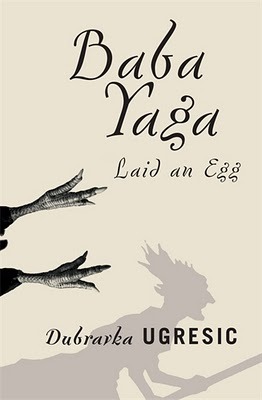 In all these instances, mother/daughter and parent/daughter relationships read, in part, as comments on time and social change, on memory and forgetting. Parents are associated with the past. They live in Zagreb as opposed to the new spaces of emigration in western Europe that Ugrešić’s heroines so often inhabit. They order and rearrange family photos and other memorabilia, pruning out, hiding, or perhaps altering pieces that seem at odds with changing political winds. They hold on to visual symbols of dead things—pictures of Tito, photos of children with former romantic partners, tea biscuits with expiration dates that precede the collapse of Yugoslavia itself—as if by such acts they can somehow counteract change and stave off death. They remember and they forget. The mother in the opening chapters of Baba Yaga Laid an Egg suffers from aphasia, as a result of age, and metastasized breast cancer. Her mind, like a postsocialist city where everything has suddenly been renamed, seems devoid of landmarks, and she is unable to accurately connect her thoughts to words. Yet she feels enough of a nostalgic connection with her personal past that her daughter travels to Bulgaria to see and photograph the places she grew up, acting as her bedel, or paid surrogate.
In all these instances, mother/daughter and parent/daughter relationships read, in part, as comments on time and social change, on memory and forgetting. Parents are associated with the past. They live in Zagreb as opposed to the new spaces of emigration in western Europe that Ugrešić’s heroines so often inhabit. They order and rearrange family photos and other memorabilia, pruning out, hiding, or perhaps altering pieces that seem at odds with changing political winds. They hold on to visual symbols of dead things—pictures of Tito, photos of children with former romantic partners, tea biscuits with expiration dates that precede the collapse of Yugoslavia itself—as if by such acts they can somehow counteract change and stave off death. They remember and they forget. The mother in the opening chapters of Baba Yaga Laid an Egg suffers from aphasia, as a result of age, and metastasized breast cancer. Her mind, like a postsocialist city where everything has suddenly been renamed, seems devoid of landmarks, and she is unable to accurately connect her thoughts to words. Yet she feels enough of a nostalgic connection with her personal past that her daughter travels to Bulgaria to see and photograph the places she grew up, acting as her bedel, or paid surrogate.
Largely confined to their apartments, doctors’ offices, or hospital beds, Ugrešić’s mothers often seem unable to cope with the changing world outside and their own physical and mental decline. They retreat into Spanish-language soap operas or personal memory, hiding from the disarray that surrounds them and their own unmet emotional needs. They don wigs, like armor, when they must go out and worry that the rain might catch them while they are in the open. From the moment their children arrive for a visit, they dread their inevitable departure and try, to the extent they are able, to protect themselves by immersing themselves in building gossip and the lives of neighbors. They suffer from an emotional hunger that no amount of attention from their adult children or anyone else can really assuage.
For a Russianist, the notion that a novelist might use strained relations and unsatisfactory communicative exchanges between a child and a parent as a means of commenting on social change calls to mind immediate associations, the most important of which is, of course, Turgenev’s great novel Fathers and Children, which is known in English under the mistranslated title Fathers and Sons. Indeed, in sequences in her novels that focus on mother/daughter relations, Ugrešić relies on the same trope of generational reversal that stands out in Turgenev’s descriptions. The narrator of The Ministry of Pain, Tania Lucic, arrives home in Zagreb and finds her mother “shorter and more frail” than she remembered and notes that her mother immediately “flung herself into my arms like a child” (96). She then watches as her mother crumbles bread “the way that children do” (110). When Tania goes to visit the parents of her former romantic partner, she finds his father dependent on a catheter, babbling out streams of words, and donning tentative half-smiles that make him look “like an abandoned child doing his best to overcome the slight” (109). Parents, in The Ministry of Pain, look on their children with longing and need, as a source of potential emotional and/or physical support. “Tanjica’s come and taken over, thank God. Thanks anyway, but Tanjica will take care of it,” the narrator of The Ministry of Pain imagines her mother saying (101).
The street names and landmarks have changed; [Ugrešić’s narrators] have no way to orient themselves in this fundamentally new landscape.
Yet Ugrešić’s narrators differ from Turgenev’s young people in a very key respect. Although her narrators may look on their aging parents from an almost maternal distance and both see and treat them as childlike, they have little of the self-assurance and arrogance of Bazarov and Arkady at the beginning of Turgenev’s Fathers and Children. They are not the enthusiastic proselytizers of new scientific and cultural norms. On the contrary, they too often seem lost in the new world that surrounds them. They are confused when they step out onto the streets of familiar postsocialist cities. The street names and landmarks have changed; they have no way to orient themselves in this fundamentally new landscape. For them, returning to these old stomping grounds seems like “attending their own funeral” (The Ministry of Pain, 113). In both The Ministry of Pain and Baba Yaga Laid an Egg, Ugrešić’s narrators note that their mothers’ apartments contain few signs of them. They stay in guest rooms denuded of personal possessions. Their mothers, for all they may miss them in their absences, have created spaces and lives for themselves that allow little room for an adult child—just as the professional circles and friendship groups they used to inhabit have largely moved on without them. On the airplane, as she leaves Zagreb after her visit, the narrator of The Ministry of Pain feels both traumatized and relieved. “The refugee trauma, the equivalent of the sudden disappearance of the mother from a child’s field of vision,” she notes, “had surfaced where I’d least expected it: ‘at home.’ The fact that I’d managed to get lost in an area I knew like the back of my hand filled me with horror” (117).
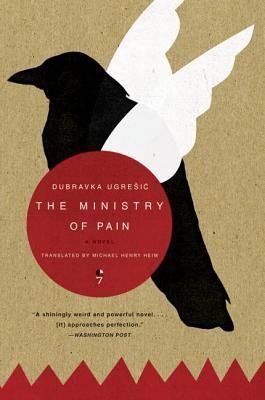 In this brief quote, Tania again becomes a child, assuming the role of the abandoned orphan in which she earlier imagined her former romantic partner’s father. The mother here, of course, is the nation that she remembers from her childhood, which has disintegrated and thereby abandoned her. The refugee’s grief, like that of an orphaned child, morphs into confusion and resentment. Trapped in a cycle of loss, the narrator of The Ministry of Pain is unable to perceive that the Yugoslav wars—which represent the great dividing line in her own personal history, splitting time into before and after—are receding into the past and that, in her former homeland, life is moving on.
In this brief quote, Tania again becomes a child, assuming the role of the abandoned orphan in which she earlier imagined her former romantic partner’s father. The mother here, of course, is the nation that she remembers from her childhood, which has disintegrated and thereby abandoned her. The refugee’s grief, like that of an orphaned child, morphs into confusion and resentment. Trapped in a cycle of loss, the narrator of The Ministry of Pain is unable to perceive that the Yugoslav wars—which represent the great dividing line in her own personal history, splitting time into before and after—are receding into the past and that, in her former homeland, life is moving on.
In western Europe, too, Ugrešić’s narrators often move through space restlessly and awkwardly, struggling to make a place for themselves. In a key sequence in The Museum of Unconditional Surrender, the narrator finds herself moving in the wrong direction after a chance encounter with an elderly gypsy who, like her, is a refugee from the East. To avoid revealing her disorientation, she gets into a line at a phone booth and makes up an excuse to make a personal call (7). Her new environment leaves her tired and alienated: the only phrase she knows in German at the beginning of the book translates to “I am tired” (3). Ugrešić’s narrators in both The Museum of Unconditional Surrender and The Ministry of Pain move restlessly between their native tongue and the foreign languages they are slowly acquiring. They struggle to find a means of “looking forward.” Even at the end of The Ministry of Pain, when Ugrešić’s narrator seems to have carved out a modest, if decidedly downwardly, mobile place for herself in Amsterdam—with a job as a nanny and a former student as a live-in boyfriend—she regularly retreats to the seaside when “angst gains the upper hand” to scream curses in her native language at the sea (254–57). The “pure extract of nothing to remember and nothing to forget” that she finds in moments of peace disperses all too easily (254).
In Ugrešić’s The Ministry of Pain, it is not the narrator who seems connected to the world of medicine and experimentation that was so closely associated with Turgenev’s young nihilist Bazarov, but rather the narrator’s mother. The mother tirelessly tests her blood sugar, charting the level in a “diary” with superstitious enthusiasm, and, as her daughter prepares to depart, tests her blood pressure, an ineffectual, needless gesture that we are told replaces the standard “farewell hug and kiss.” Here, science is not a new way of looking at the world that promises progress but rather just a mechanism of self-comfort and a prop, a means of staying artificially busy and keeping unpleasant emotions at bay. “The blood pressure monitor,” Ugrešić writes, “was a visible substitute for something invisible, a bloody umbilical cord, all fresh and shiny like a metal string” (114). This image ties our narrator to the world of the past and to her mother, for all that she seems alienated and separated from them, on a primal, terrifying level. How fresh is the cord, really, if it runs between an adult woman and her mother? Does it nourish or trap? What does it say about the difficulties of both escaping the past and moving forward or, for that matter, of the seductive pleasures of nostalgia?
Ugrešić’s novels beautifully capture the dislocation and anxiety that parents and children throughout eastern Europe and the former Soviet Union experienced in the wake of the collapse of communism. Her novels may hint at the eventual rise in eastern Europe of “a new, completely different tribe” that is fully assimilated to postsocialist reality and of young people who “really are ‘looking ahead’ and will no longer ‘understand the past’ or at least not in the same way,” but what they chronicle more immediately is loss and displacement, the kinds of suffering that fuel nostalgia and make a clean break from the past so challenging (The Ministry of Pain, 234).
University of Oklahoma


